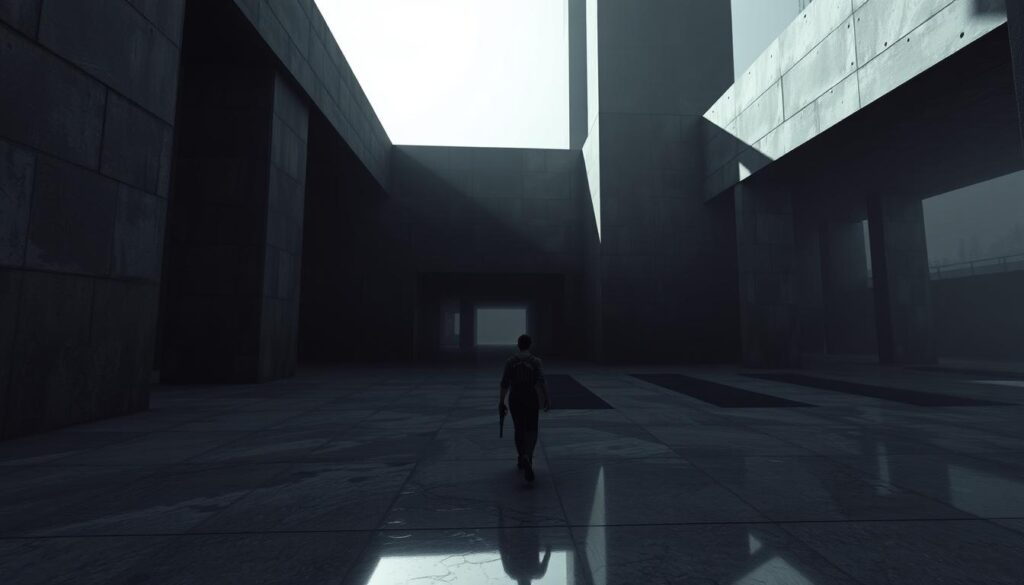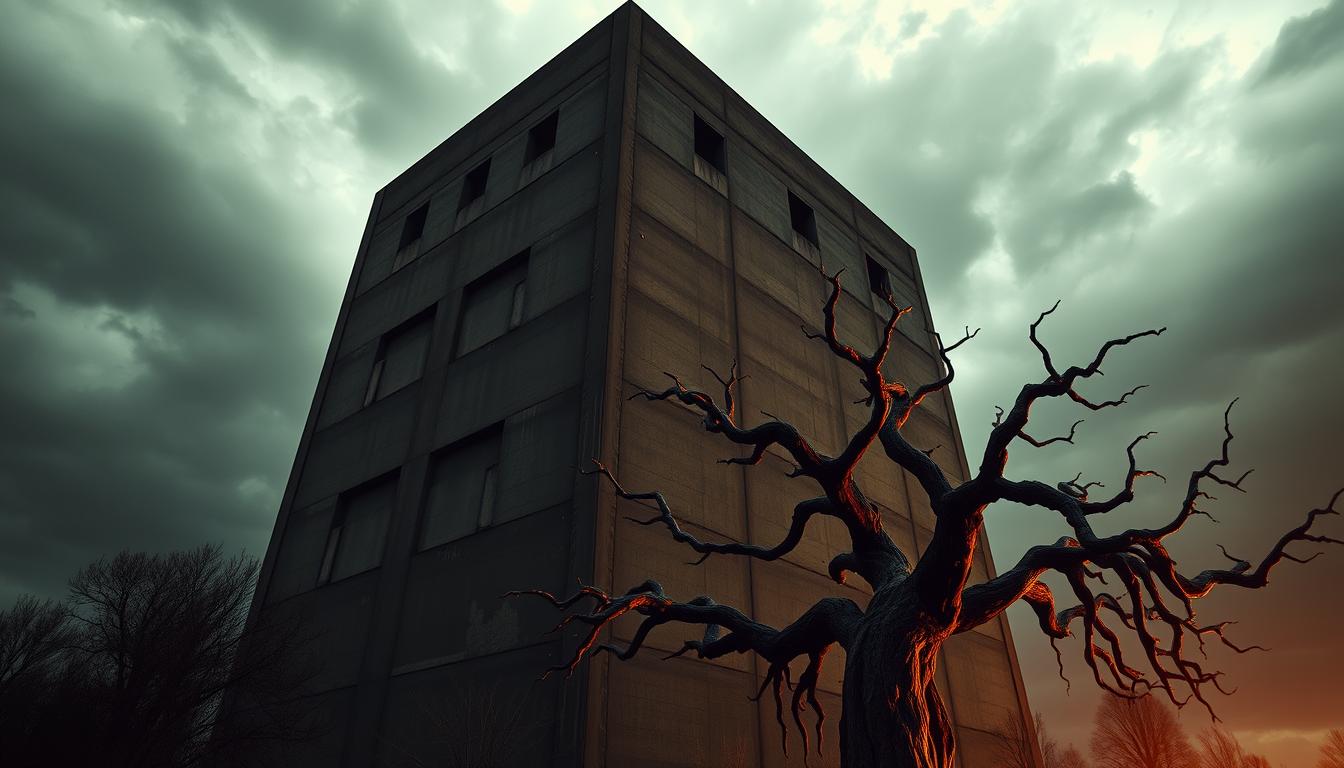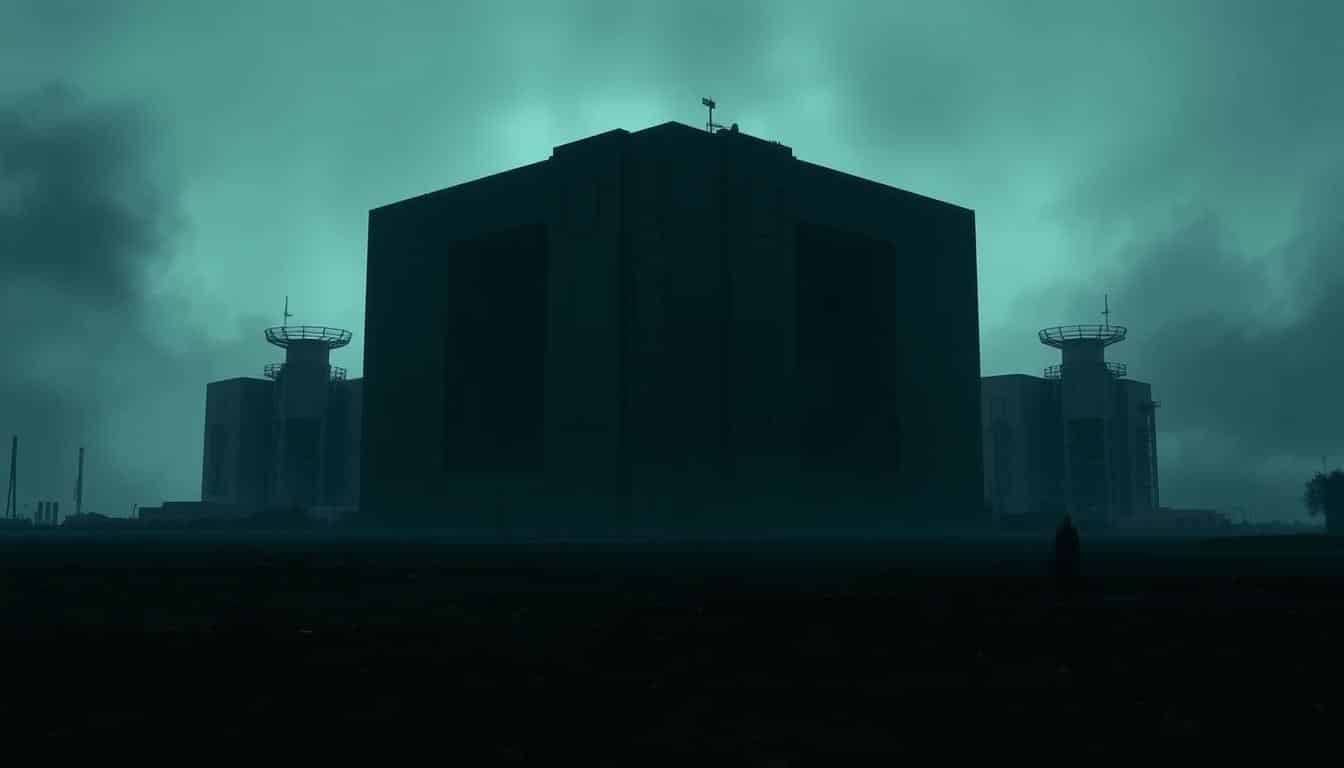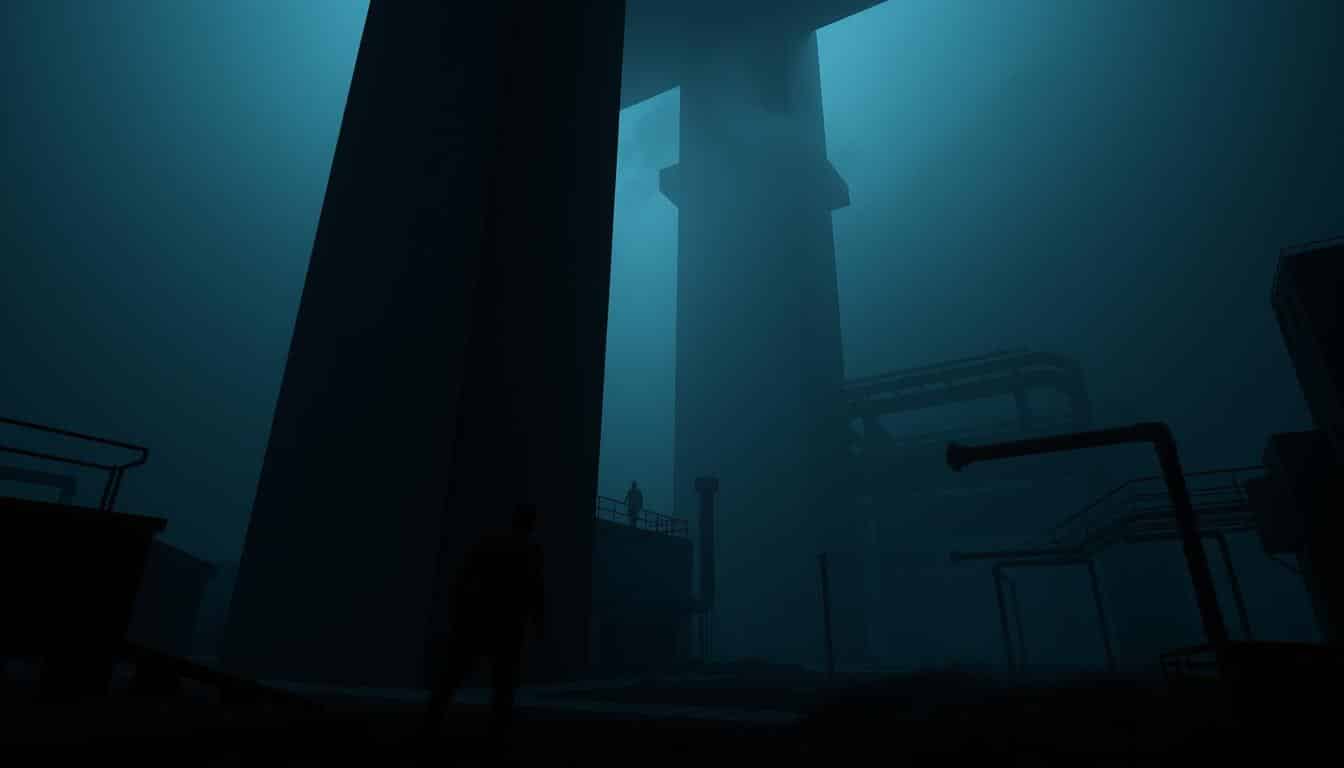In the realm of game design, brutalism stands out. It’s not just a visual style, but also a tool for making game worlds feel eerie. This style, known for its raw and unfinished look, is now part of many games. It makes the gaming experience more intense for players.
Understanding brutalism helps developers create more engaging, scary experiences. This article will cover brutalism’s key features and how they affect gamers emotionally. It shows how brutalism is crucial in making memorable gaming atmospheres.
Introduction to Brutalism in Game Design
Brutalism began in the mid-20th century as an architectural style. It showcases raw materials and functional designs. The style is known for its stark looks, heavy structures, and true expression of materials. This has influenced not just buildings but game design too.
Gamers today see brutalism in unique ways within their games. This art style combines minimalism and strong visual impact. It makes games more than just play, by stirring deep feelings in players. By understanding brutalism, game creators can make worlds that are deep and full of history.

Defining Brutalism in Architecture and Gaming
Brutalism stands out with its bold, raw look. It’s known for its huge forms and simple materials like concrete and steel. This style goes against conventional beauty, showing off a tough, unfinished appearance that can stir deep feelings.
In gaming, brutalist elements create captivating worlds. Game makers use these simple yet striking features to tell their stories. This approach defines the game’s visual and play style, making experiences more engaging for players.
Games that feature brutalism can feel lonely or tense, making players feel a strong connection. This mix of architecture and gameplay brings unique stories and breathtaking scenes. It fits perfectly with games about horror or mystery, proving brutalism’s impact on game design.
The Aesthetic Appeal of Brutalism in Game Worlds
The love for brutalism in games comes from its unique, simple look. This style uses one-color themes and clear environments. This creates an atmosphere that grabs your interest. The strong, bold lines and rough surfaces make game worlds feel real. They show both the beauty and the edginess of the design.
Players often see these details differently. The sharp contrasts and simple shapes can make you feel uneasy. This feeling adds to the fun of playing. It helps tell the story, adding to the themes of being alone, sadness, or tension in the game.
Brutalism’s bold simplicity helps pull players into these make-believe places. It makes the experience both fascinating and a bit eerie. By using this style, game makers can craft places that are visually stunning. These places match the game’s important themes. This makes players even more engaged.
Core Elements of Brutalist Game Design
Brutalist game design uses key elements that make games deep and memorable. It selects basic materials and textures carefully. Monumental designs help increase how much players get into the game. Each piece is crucial for making the game feel more intense, especially in scary settings.
Raw Materials and Textures
The materials chosen for a game can change its whole feel. Concrete, steel, wood, or stone make the game world feel real and gritty. These textures make places feel more tense and eerie. This helps players get totally lost in the game.
Monumentality and Scale
Using huge designs makes players feel small and adds tension. Big shapes guide the game and story, making spaces feel more oppressive. This big scale grabs players, putting them into a world mixed with fear and amazement, especially in horror games.
Mastering the Use of Brutalism for Spine-Chilling Game Environments
In horror games, using brutalism is a key tool for creators. They aim to make scary environments. Brutalist architecture’s stark, raw look can make a game feel more uneasy. This manipulates what players expect.
“Observation” and “Metro Exodus” show how well brutalism works in games. They blend huge, bold structures into the game world. Players get a mix of fear and fascination from these spacious and powerful designs.
Key aspects that make this design work include:
- Use of raw concrete and unusual structural forms to create unsettling atmospheres.
- Strategic manipulation of space, encouraging players to explore complex layers of narrative and spatial relationships.
- An overarching sense of isolation, intensified through stark lighting contrasts.
Game developers can create visually amazing and emotionally gripping worlds by embracing these elements. The brutalist style makes regular places into spooky settings. These stay with players long after they’ve finished playing.
Case Studies of Successful Brutalist Game Worlds
Brutalist design has made its way into famous games. It shows how this style can make games feel real. Games like “A Plague Tale: Innocence” and “Devil May Cry 5” show how brutalism can be used well. They mix storytelling and visuals perfectly.
Surveying Notable Games
Some games really highlight brutalist design. They make you feel more connected to the game:
- A Plague Tale: Innocence: Mixes dark stories with rough settings. Uses raw materials and run-down places to tell its story better.
- Devil May Cry 5: This game’s wild fights and huge buildings show brutalism’s intense side.
- Control: It pairs concrete with strange shapes. This makes the game look unique and unforgettable.
Analysis of Visual Impact
These games grab players’ attention with a mix of scary and stunning. They use sharp shapes and raw textures. This makes players feel strong emotions. Developers use:
- Bright and dark spots that make things feel spooky.
- Huge buildings that amaze you with their size.
- Gameplay that fits right into the brutalist look.
By doing this, creators make sure players are totally into the game. They make brutalism make the game more interesting.
Emotional Responses Elicited by Brutalism
The design principles of brutalism do more than shape environments. They also stir deep emotions in players. When players move through stark, bare spaces, they often feel scared, anxious, and tense.
These feelings aren’t just side effects; they’re key to pulling players into the story. The strong emotional ties make the game’s world more real and captivating.
Several elements trigger these emotions:
- The use of rough, unrefined materials makes the atmosphere more intense. It aligns players’ feelings with the game’s dark themes.
- Huge, imposing buildings make players feel small and increase the tension as they explore.
- Simple textures create a feeling of emptiness. This heightens the sense of being alone and exposed.
Game designers use these elements to spark specific emotions. This guides players through unique mental experiences that stick with them long after they’ve stopped playing. By understanding how brutalist designs impact emotions, creators can draw players deeper into their games.
Crafting Atmosphere with Sound and Lighting
In brutalist game design, sound and lighting are key. They work together to make the game world feel real. They can make players feel scared or amazed. Choosing the right sounds and music makes the game’s empty spaces feel more intense.
Light plays a big role too. It changes how everything looks. Bright lights and deep shadows can make things feel creepy. But, a soft glow might offer comfort. Sound and light together make the game’s world deeply moving. They help players really get into the tough settings.
Comparative Analysis: Brutalism vs. Other Design Styles
When we talk about design in games, brutalism really stands out. It’s different from other styles like minimalism and realism. This look at the styles shows how they tell stories and share feelings in their own ways.
Brutalism uses bold looks and big structures that really grab your attention. Minimalism goes for clean lines and being useful, which tends to be calmer. And realism? It tries for a lifelike feel but can miss the unique flair brutalism has.
- Strengths of Brutalism:
- It makes you feel uneasy, perfect for stories that want to give you chills.
- It tells stories visually with sharp contrasts and tough materials.
- Weaknesses of Other Design Styles:
- Minimalism sometimes feels too simple and can’t really show tension well.
- Realism might make stories less impactful by caring more about looking real than feeling strong.
This look at design styles shows why brutalism can be so powerful in games. It makes worlds that feel deep and hit hard emotionally.
Tips for Implementing Brutalist Design in Your Games
Designing with a brutalist style can make your game more immersive. It brings a unique feel that can grab the player’s attention. Knowing how players move and feel in the game world is key.
Understanding Player Experience
It’s important to think about how players will feel in these unique settings. Will they be amazed or maybe a bit uneasy? Try out different designs and see what players think to improve.
Balancing Form and Function
Keeping a balance between looks and how the game plays is crucial. The design should make the game better, not get in the way. Make sure your designs add to the fun and fit the brutalist vibe.
Conclusion
Understanding brutalism in scary game worlds shows its deep impact on game design. Brutalism’s core is to trigger strong emotions, catching the player’s interest. It uses raw materials and big scales to tell stories in the game.
Brutalist environments make the game more than memorable. They turn game worlds into real stories that touch players’ feelings. Game designers can make unique, chilling experiences by using brutalism.
In conclusion, brutalism can really improve game design. It blends stunning looks with emotional stories. This approach can lead to new horror and suspense games that both scare and fascinate players.



